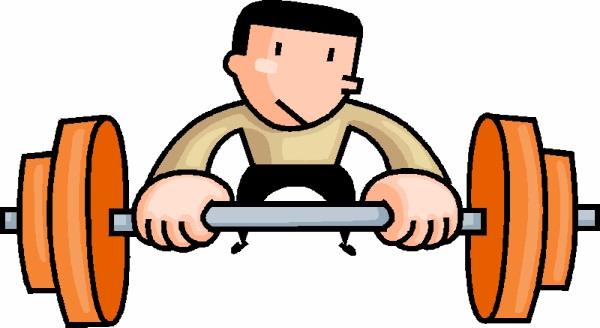
Physiological Effects Of Exercise
|
Neuromuscular Effects
Strength And Endurance
 Appropriate exercise increases the strength and endurance of skeletal muscles. Increases in muscular strength are associated with increases in muscle mass; increases in muscular endurance are associated with improved blood flow to the working muscles. These results are achieved by resistance training. Any exercise that causes the muscle to increase its tension, whether or not the muscle actually shortens during contraction, provides an appropriate strength-training stimulus. Resistance can be applied to a muscle group by attempting to move an immovable object, by working one muscle group against another, by lifting heavy weights, or by using special strength-training machines and devices. There is a wide selection of strength-training equipment that, when used properly, can increase muscular strength and endurance. It is possible that some of the equipment is more efficient in developing maximal performance, which is important for competitive athletes. But for the average individual, who is training to maintain an acceptable level of muscular fitness, any one device or program is probably about as good as another. Strength and endurance training is done by performing several “reps” (repetitions) of a given exercise, then moving on to another exercise for a different muscle group. Experts generally recommend that exercisers select a resistance that is approximately 65 percent of the maximum they can lift for that particular exercise. This load should allow the completion of 12 reps of that exercise in 24 to 30 seconds. Each group of eight to 12 reps is called a set, and two or three sets of a given exercise are recommended for each training session. The average individual should perform strength and endurance training two to three days per week. Super circuit weight training refers to a program in which running or other aerobic exercises are performed between sets; this training produces aerobic as well as strength benefits.
Flexibility
Muscles and tendons can be stretched to improve flexibility (the range of motion at a joint). Flexibility training follows a few, simple principles. To improve range of motion, the muscles and other connective tissue around a joint must be stretched. The preferred stretching technique is a slow increase in the range of motion. The exerciser should feel the muscle stretch, but not to the point of pain. The stretch should be performed gradually, and the body should be held for 10 to 20 seconds in the stretched position and then gradually returned to a relaxed posture. By stretching each muscle group in this fashion as a part of the strengthening and conditioning program, the participant will maintain good flexibility. Bouncing or explosive stretching movements should be avoided, as they can result in muscle or tendon tears.
Cardiorespiratory Effects
Cardiac Effects
Regular aerobic exercise training has a direct effect on the heart muscle. The muscle mass of the left ventricle, which is the pumping chamber that circulates blood throughout the body, increases with exercise training. This change means that the heart can pump more blood with each beat. In short, the heart becomes a bigger, stronger, and more efficient pump capable of doing more work with less effort.
Circulatory Effects
Regular exercise also produces changes in the circulation. As previously discussed, muscle endurance training serves to increase blood flow to the working muscles. This increased blood flow means that more oxygen and fuel can be delivered to the muscle cells. The number of red blood cells, which carry oxygen in the blood, also increases with training, as does blood volume. Taken together, these changes indicate a greater capacity to transport oxygen to the working muscles.
Pulmonary Effects
The basic function of the lungs is to facilitate the transfer (1) of oxygen from the atmosphere into the blood and (2) of carbon dioxide from the blood into the atmosphere. To accomplish this, air must pass into and out of the lungs, and the respiratory gases must diffuse through the lungs into the circulation and vice versa. Although exercise has not been shown to affect this diffusing ability, exercise training does strengthen the muscles of respiration. This means that a trained individual can move more air through the lungs per time unit, and forced vital capacity (i.e., the maximum volume of air that can be exhaled after a full inspiration) may be increased.
|